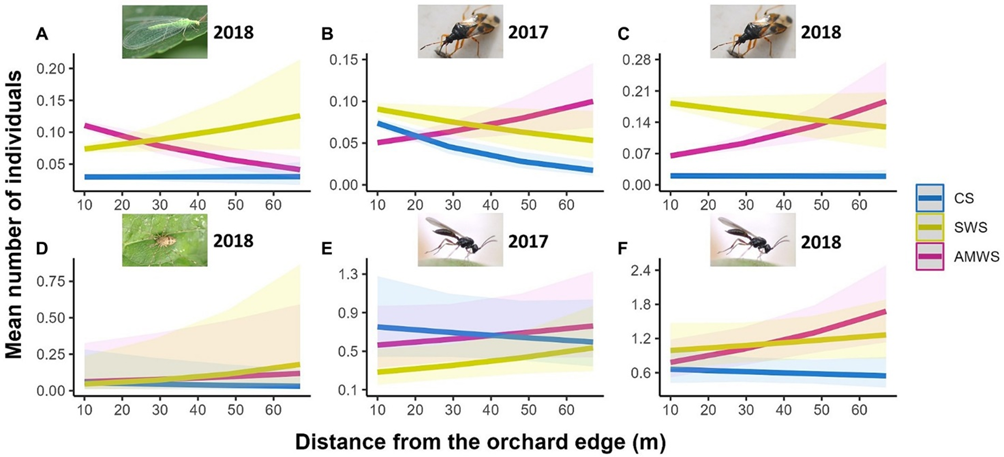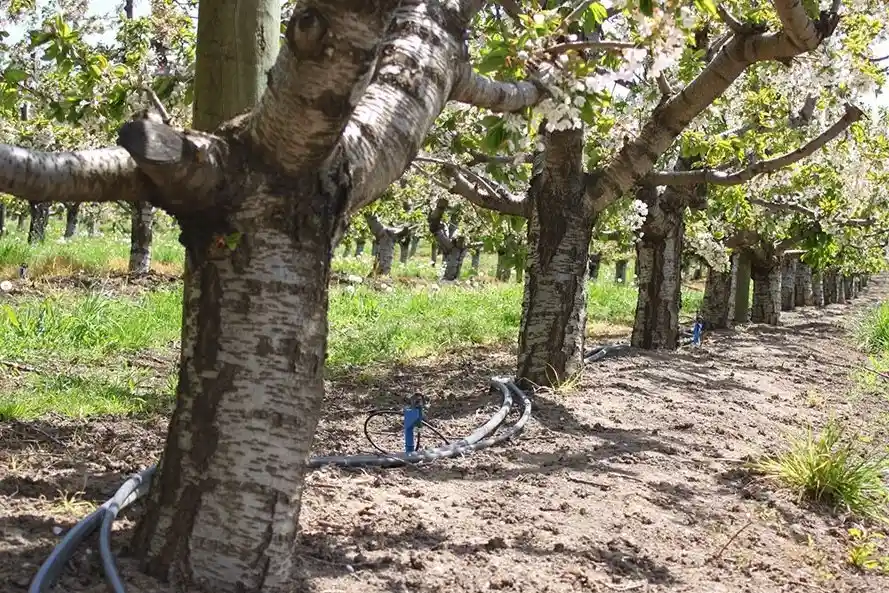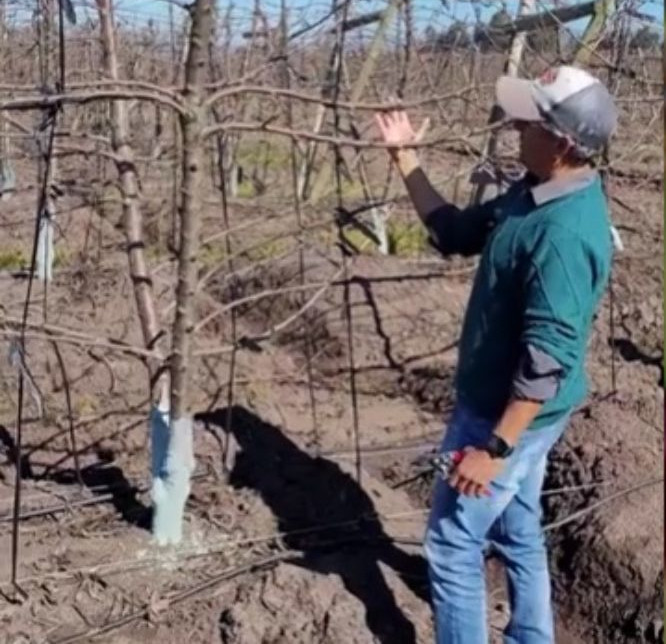Open polytunnels are widely used in the commercial cultivation of cherries in temperate regions, including the UK. These tunnels protect the fruit from adverse environmental factors, such as rainfall.
Cherry trees are typically covered during the flowering and fruit development phases, but they are left uncovered in winter to allow for the chilling requirements of the buds to be fulfilled.
Polytunnels offer several advantages, as they protect flowers and fruit, which in turn improves fruit quality, consistency of marketable production, and overall yields. Additionally, the flowering and harvesting period of cherries becomes more predictable.
The persistence of plant protection products (such as insecticides like lambda-cyhalothrin and cyantraniliprole) is prolonged under polytunnels, thus reducing the need for additional chemical applications.
However, there are also some negative aspects associated with polytunnels, including increased risk of pests and diseases, potential for excessive heat, and occasionally reduced fruit formation and quality.
 Immagine 1. Suddivisione delle file in quattro sezioni e 12 sottosezioni (ss), compreso il buffer (non valutato). Modificato da Mateos-Fierro et al. (2021).
Immagine 1. Suddivisione delle file in quattro sezioni e 12 sottosezioni (ss), compreso il buffer (non valutato). Modificato da Mateos-Fierro et al. (2021).
Moreover, the presence of insects can be affected by the specific types of plastics used in polytunnels, which may influence beneficial insects, including both pollinators and natural enemies of pests.
Despite the fact that natural enemies are generally not deterred by polytunnel covers, it remains uncertain how beneficial insects (both pollinators and natural enemies of pests) are impacted.
Field studies have revealed that beneficial insects are more commonly found on the outer part of the field, with their presence decreasing towards the center of the plot.
In this UK study, the effect of perennial flowering areas in the inter-row was examined to understand its role in mitigating the potential "edge effect."
The main objective was to determine whether edge effects influenced the density, , and behavior of natural enemies and flower visitors, along with their respective ecosystem services, such as pest regulation and pollination in ten commercial cherry orchards grown under polytunnels.
A conventional control strip (CS) was compared to a standard wildflower strip (single cut at the end of the season) and an actively managed wildflower strip (routinely cut at a height of 20 cm).
Natural enemies were observed in the inter-row and on the plants after the flowering period, and flower visitors were observed at various distances from the orchard boundary both during and after flowering.
In 2019, a trap system for predatory insects on trees was implemented to assess pest regulation services. The study found a 33% reduction in pest control toward the center of the orchard when the inter-row was managed conventionally (CS).
 Immagine 2. Predicted density (mean number of individuals) of the natural enemy taxa which were significantly affected by distance from the orchard edge in at least one alleyway treatment including (A) Neuroptera in 2018, Hemiptera in (B) 2017 and (C) 2018, (D) Opiliones in 2018 and parasitoid wasps in (E) 2017 and (F) 2018 from surveys in alleyways according to alleyway treatment and distance (m) from the orchard edge towards the orchard centre. Regression lines fitted on GLMER.NB with 95% confidence intervals (shadows). CS (Control Strips), SWS (Standard Wildflower Strips), AMWS (Actively Managed Wildflower Strips). Note differences in y-axes.
Immagine 2. Predicted density (mean number of individuals) of the natural enemy taxa which were significantly affected by distance from the orchard edge in at least one alleyway treatment including (A) Neuroptera in 2018, Hemiptera in (B) 2017 and (C) 2018, (D) Opiliones in 2018 and parasitoid wasps in (E) 2017 and (F) 2018 from surveys in alleyways according to alleyway treatment and distance (m) from the orchard edge towards the orchard centre. Regression lines fitted on GLMER.NB with 95% confidence intervals (shadows). CS (Control Strips), SWS (Standard Wildflower Strips), AMWS (Actively Managed Wildflower Strips). Note differences in y-axes.
The diversity and density of flower visitors also decreased with distance from the edge, showing a 34% reduction in individuals.
These findings indicate that wildflower strips are an effective method to mitigate edge effects on pest control, even if their impact on pollination is limited.
Wildflower strips, regardless of their management style, have proven to be a beneficial intervention in reducing the edge effect within cherry orchards by supporting natural enemies.
The even distribution of flower visitors along the rows was promoted by wildflower areas, which also helped to partially mitigate the negative impact of the edge effect on fruit formation and quality.
As a result, establishing wildflowers in the inter-row of cherry orchards is a beneficial practice for growers, offering many advantages with minimal risk.
Images: Matteos Ferros et al.; SL Fruit Service
Source: Wildflower strips in polytunnel cherry orchard alleyways support pest regulation services but do not counteract edge effects on pollination services - Zeus Mateos-Fierro, Michael P. D. Garratt, Michelle T. Fountain, Kate Ashbrook, Duncan B. Westbury - Frontiers in Sustainable Food Systems
Melissa Venturi
University of Bologna (IT)
Cherry Times - All rights reserved














